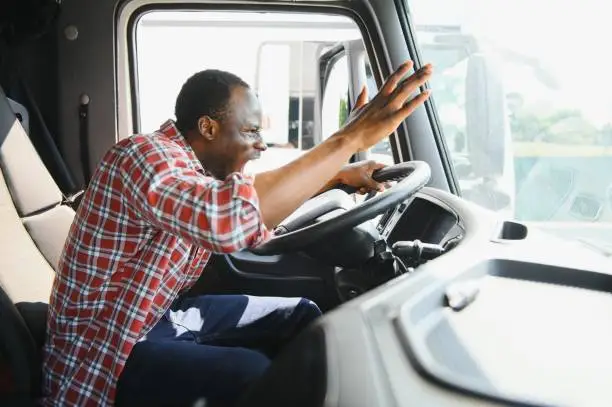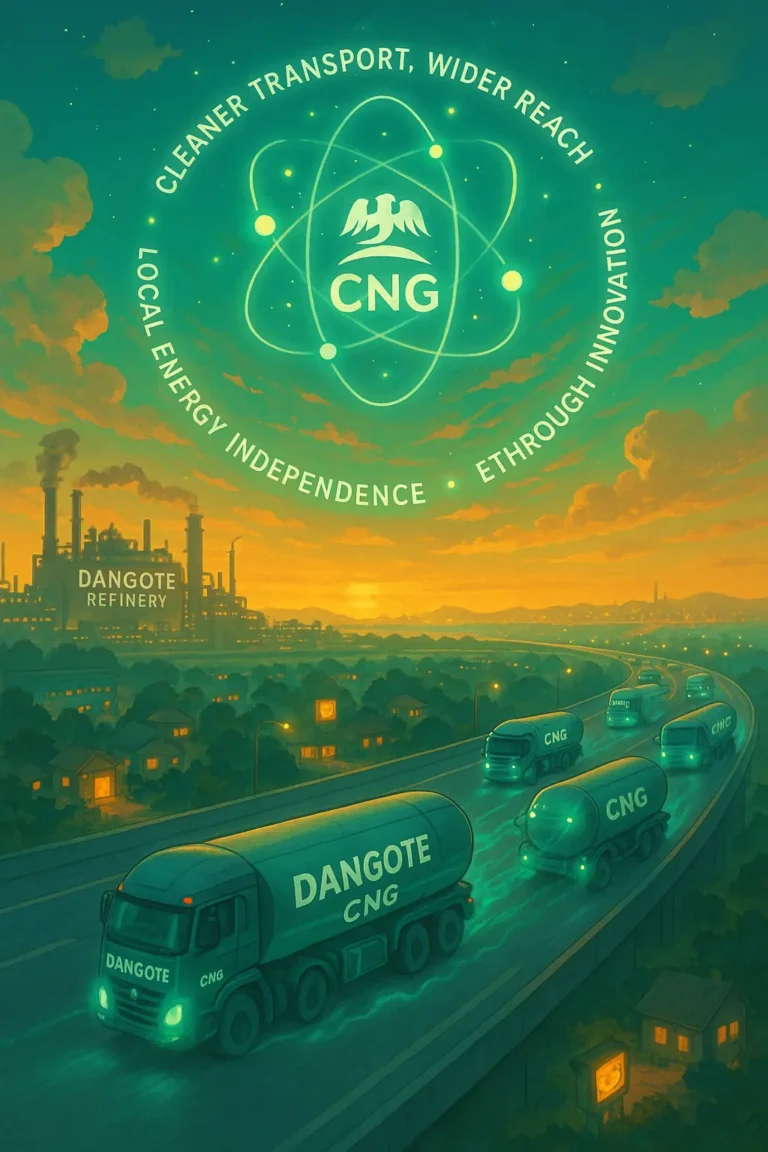
There are many things you never want to happen in your logistics or supply chain, and vehicle breakdowns are one of them. It is worse when that vehicle is conveying goods.
Dealing with a vehicle breakdown can be stressful for the driver and logistics manager. When you compound the added effect of poor infrastructure and security on African roads, you are in for quite an experience.
In this article, we will explore how logistics or transportation managers and drivers can handle vehicle breakdowns more effectively.
What Drivers Can Do When They Have Vehicle Breakdowns
As a driver, your vehicle is sort of like your office. Having it break down can be both mentally and emotionally taxing. And we understand that.
In this section of the article, we will explore the procedures to follow when your vehicle breaks down.
1. Secure the Vehicle and Goods
The goods you carry are probably worth a lot of money, so securing them should be the first item on the agenda. You can start by ensuring your vehicle is parked well on the side of the road. And then you can inform the local authorities in the vicinity.
In Africa, there is a lot of local community help that you can also engage to safeguard the truck and the product. Doing this gives you a lot of mental reprieve and helps prevent theft or damage to the goods and vehicle.
2. Identify the Problem
After securing the vehicle and the goods, the next step is determining the cause of the vehicle breakdown. What you can do here may vary depending on where you are and how much you know about the vehicles.
If you have enough training, you may examine the vehicle to determine the damage and its origin, but if you do not, you may involve a local mechanic. In cases where you are close to your company’s facility, you might wait for them to send over a mechanic.
3. Call for Help
This is the final step in the process. If you have identified the problem, it is time to call for help and give a full report on the damages sustained. Calling for help informs the organization of the issue so they can take action.
Your report on the damage sustained helps the organization better plan how to fix the vehicle. This is why it has to be detailed, clear, and concise. Always make sure you cover everything that needs fixing on the vehicle.
𝗣.𝗦. 𝗧𝗵𝗶𝘀 𝗽𝗿𝗼𝗰𝗲𝘀𝘀 𝘀𝗵𝗼𝘂𝗹𝗱 𝗯𝗲 𝗱𝗼𝗻𝗲 𝗮𝘀 𝘀𝗼𝗼𝗻 𝗮𝘀 𝗽𝗼𝘀𝘀𝗶𝗯𝗹𝗲. 𝗬𝗼𝘂 𝗱𝗼𝗻’𝘁 𝘄𝗮𝗻𝘁 𝘁𝗼 𝘀𝗽𝗲𝗻𝗱 𝘁𝗼𝗼 𝗹𝗼𝗻𝗴 𝗯𝗲𝗳𝗼𝗿𝗲 𝗵𝗲𝗹𝗽. 𝗜𝘁 𝗶𝗺𝗽𝗮𝗰𝘁𝘀 𝘁𝗵𝗲 𝗹𝗲𝗮𝗱 𝘁𝗶𝗺𝗲 𝗼𝗳 𝘁𝗵𝗲 𝘁𝗿𝗮𝗻𝘀𝗽𝗼𝗿𝘁𝗮𝘁𝗶𝗼𝗻 𝗮𝗻𝗱 𝘁𝗵𝗲 𝗰𝘂𝘀𝘁𝗼𝗺𝗲𝗿’𝘀 𝗲𝘅𝗽𝗲𝗰𝘁𝗮𝘁𝗶𝗼𝗻𝘀.
How Logistics or Transportation Managers Can Manage Vehicle Breakdowns
Dealing with or managing a vehicle breakdown correctly can do a lot to salvage a terrible circumstance. These strategies can help.
1. Get a Local Mechanic
When a vehicle breaks down, it will likely be far from your organization’s facility. This makes it challenging to send help. Often, if it is a minor situation, local mechanics in the area can help fix the problem.
However, this strategy can be tricky, especially because not all mechanics know their stuff, and the local mechanics may see it as an opportunity to charge excessively and make a quick buck.
It is essential to negotiate effectively and consistently examine the vehicle when it gets to the destination or facility. If there are lasting issues, you can identify and correct them immediately.
2. Call in Experts
If it is a major issue like an engine challenge, calling in an expert trusted by the organization is more beneficial. This is because major problems can turn into an expensive nightmare if they are not handled correctly.
Getting the right people to fix the issue will greatly benefit the supply chain and logistics business because it limits the impact of the damage on the vehicles
3. Send a Replacement Vehicle
Some major damages may take too long to fix, which could seriously impact the lead time for the goods being transported. To better handle this situation, it is better to send a replacement vehicle and the tools that can be used to transfer the goods.
You may send out vehicles from your facilities. However, if you think it will take long, you may hire or lease out one that fits the same specifications as the damaged vehicle locally.
4. Driver Training
This is a good strategy with lots of return on investment. Your drivers are the point men for their vehicles; training them to fix issues can save your supply chain time and money.
You may start with minor issues that ensure they aren’t searching for a local mechanic for too long. For the more gifted ones, you may train them on fixing major issues. Driver training is great because lead times do not suffer during vehicle breakdowns.
𝗣.𝗦. 𝗧𝗵𝗲𝘀𝗲 𝘀𝘁𝗿𝗮𝘁𝗲𝗴𝗶𝗲𝘀 𝗮𝗿𝗲 𝗰𝗼𝗺𝗺𝗼𝗻 𝗮𝗰𝗿𝗼𝘀𝘀 𝗔𝗳𝗿𝗶𝗰𝗮𝗻 𝗹𝗼𝗴𝗶𝘀𝘁𝗶𝗰𝘀 𝗯𝘂𝘀𝗶𝗻𝗲𝘀𝘀𝗲𝘀, 𝗮𝗻𝗱 𝘁𝗵𝗲𝘆 𝗵𝗮𝘃𝗲 𝗽𝗿𝗼𝘃𝗲𝗻 𝗲𝗳𝗳𝗲𝗰𝘁𝗶𝘃𝗲 𝗶𝗻 𝗵𝗲𝗹𝗽𝗶𝗻𝗴 𝘁𝗵𝗲𝗺 𝗸𝗲𝗲𝗽 𝗰𝘂𝘀𝘁𝗼𝗺𝗲𝗿𝘀 𝗵𝗮𝗽𝗽𝘆 𝗲𝘃𝗲𝗻 𝗶𝗻 𝘁𝗵𝗲 𝗳𝗮𝗰𝗲 𝗼𝗳 𝗰𝗵𝗮𝗹𝗹𝗲𝗻𝗴𝗲𝘀.

SCN Team are the writers and editors under the supply chain nugget umbrella. With our expertise in the supply chain field, we are focused on getting you the right information broken down into digestible nuggets.







